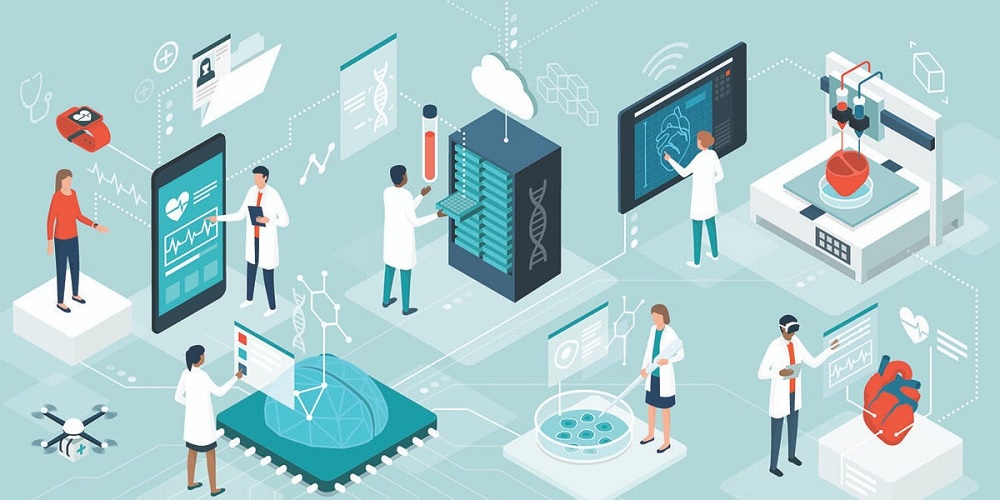6 Ways AI Mammography and Mobile Access Is Improving Physician Burnout

There's no denying it: burnout is a serious problem among physicians. Over 50% of radiologists say that they've experienced “long-term, unresolved, job-related stress leading to exhaustion, cynicism, detachment from job responsibilities, and lacking a sense of personal accomplishment.” The numbers are startling and point to the need for immediate action to address the high level of burnout among physicians. Keep in mind that this issue affects the well-being of providers, patient care, and the efficiency of the healthcare system as a whole.
The good news is that new and advanced technologies like AI mammography and mobile access are emerging as ways to help mitigate the factors that have led to this situation. In particular, AI mammography improves diagnostic accuracy and efficiency and in doing so, reduces the cognitive load on physicians. Mobile access adds flexibility and improves workflow, leading to a better work-life balance.
Here, we look at how these technologies can work together to mitigate factors contributing to physician burnout.
1. Increased Diagnostic Accuracy and Speed
The use of AI algorithms with mammography represents a significant leap in diagnostic accuracy and speed. Algorithms use vast datasets to pinpoint abnormalities with remarkable speed and accuracy to reduce false negatives and positives. They're also adept at spotting the sometimes subtle patterns that the human eye might miss, leading to earlier and more accurate detection of potential issues, enabling doctors to catch malignancies at the earliest possible stage.
The sheer speed of AI means that instead of waiting days or weeks for an image interpretation, a doctor could know what's wrong not long after leaving the testing room, so they can make faster decisions and initiate treatment plans more quickly.
2. Enhanced Workflow Efficiency
The main draw of AI mammography is how it changes the way that physicians do their jobs. The diagnostic process is far smoother and more efficient than before. With AI taking care of mundane tasks like sorting and analyzing images, doctors can devote more time to complex cases. A healthcare worker could pull up the pictures on their smartphone and use voice commands to organize and prioritize cases. If something's urgent, they can send it to the head of the queue rather than slogging through each one in order.
Another benefit is that healthcare professionals won't have to completely shift their working practices. Each tool is designed to be integrated into existing workflows, so organizations can add them without undertaking a massive reorganization.
3. Reduced Physical and Cognitive Workload
AI can perform initial reviews of mammograms and point out areas that might need a closer look. Doctors won't be spending as much time on each scan, thus reducing their physical and mental fatigue and being able to focus on the more complex aspects of diagnoses and engage more meaningfully with their patients. It won't just lead to better healthcare delivery; it could lead to fewer doctors burning out in the first place. With AI handling part of the image analysis workload, radiologists can strike a better balance between work and personal life, making this career path more fulfilling and sustainable.
4. Improved Patient Outcomes and Satisfaction
Most patients are overwhelmed when facing a cancer diagnosis, and the prospect of dealing with repeated scans and biopsies can exacerbate their anxiety. As mammography takes on a more significant role in these scenarios, the resulting precise diagnoses and timely and appropriate treatment will go a long way toward improving patient outcomes and satisfaction. Good physicians always aim to deliver patient-centered care throughout the diagnostic process. With AI as their companion, they can ensure a more efficient and less invasive process that's tailored to their patients' needs.
5. Remote Access and Flexibility
Physicians aren't at their desks 24/7, and when they're not, they often still need access to patient information. That's why mobile access to mammography results is crucial, as it gives doctors the tools to interpret scans from anywhere. It can be especially beneficial for physicians working in underserved or remote communities, as they can provide expert analysis even when not physically present.
The flexibility that remote access provides can also significantly impact work-life balance by allowing physicians to do their jobs even when they're not in the office. Managing work life from virtually anywhere allows for a more balanced approach to personal and professional commitments, which could lead to less stress and improved job satisfaction.
6. Continual Learning and Improvement
The beauty of AI-driven systems in mammography is that they continually learn and get better over time. They take in new data to fine-tune their accuracy in reading diagnostic images, and adaptive learning enables the AI model to keep pace with the most current advancements and investigative research in breast cancer detection. This supplements the diagnostic process and serves as an invaluable resource in the professional development of physicians.
Final Thoughts
By exposing practitioners to a broader cross-section of cases and rendering deep insights into complex diagnostic scenarios, AI solutions have the potential to enrich physician understanding and expertise.
Here at Novarad, we believe that the key to a successful imaging center is to work smarter, not harder, to deliver the type of care and outcomes that patients desire. To see how we can help improve your workflows, feel free to reach out to our workflow specialists today!
%20(3).png?width=1555&height=462&name=Novarad%20EHS%20Logo%20Full%20Color%20(1)%20(3).png)